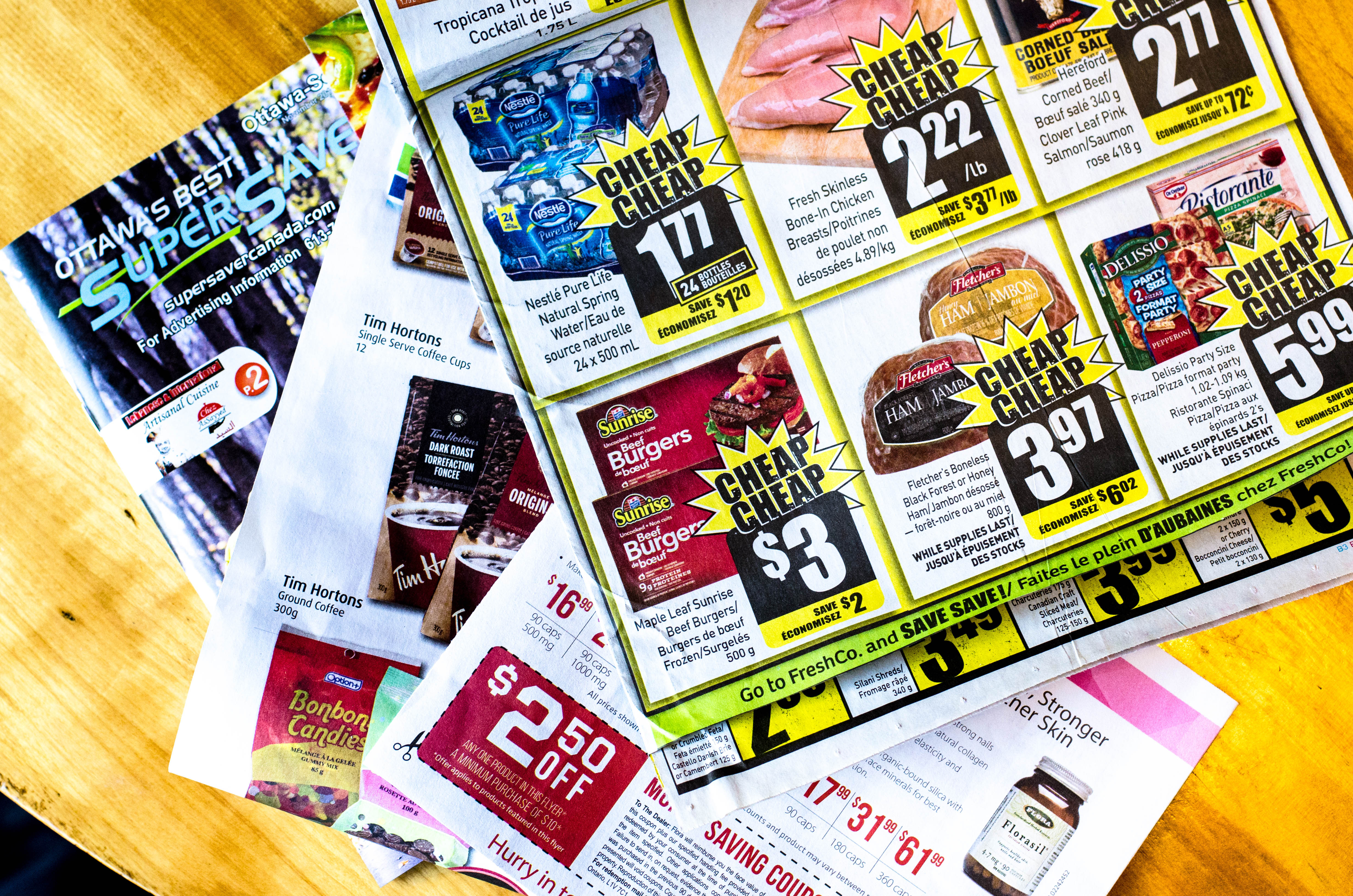Often times we want to eat healthy, but our bank accounts tell us we can’t. It can be hard to eat healthy on a student’s budget, but it’s not impossible. Eating healthy and saving money is not as difficult a scale to balance as we may think.
Here are some helpful tips to start saying no to takeout, and hello to nutritiously filled cupboards (for cheap):
1. Check the flyer
Every grocery store has a flyer, which can be a really useful way to save on healthy food. Before each trip to the grocery store, check out their weekly flyer. Often times you can find great deals on fruits and vegetables. Jot down sales on products that interest you so you are prepared when you go to the store.
2. Plan, plan, plan
If you plan your meals around what is on sale in the flyer, it will prevent you from buying food you don’t need. As well, planning meals can help to reduce the urge to buy unhealthy food for the sake of shortening the time you need to spend in the grocery store. After a while, you’ll come to know what you need to get for your favourite recipes and it’ll be much easier.
3. Use your discount
Not only can your student card save you money for food on campus, but it can also help you save off campus. On Tuesdays, most Loblaws, Independent, and Metro locations offer 10% off your purchase. You can get 10% off at Bulk Barn too if you visit on Wednesdays. Bulk Barn is a great way to save on non-perishables. Making use of these little advantages will help you save in the long run.
4. The benefit of non-perishables
What do pasta, rice, and canned food have in common? You never have to worry about these items going bad, because of their long shelf life. Take advantage of this and buy them in bulk. These items go on sale all the time, and stocking up on them while they’re on sale is always a great way to save.
5. Stretch it out
If you are cooking for just one or two people, leftovers make it easy for you stretch out one meal over multiple meals. Store your dinner leftovers in the fridge and eat them for lunch, or use leftovers from one dinner to make an entirely different meal the next night.
6. Spend now, save later
Some items are better bought in bigger quantities than in smaller ones. Instead of buying a box of Quaker packets of oatmeal (I know they’re easy and delicious), buy a big bag of Quaker quick oats and make your own (including your own cinnamon and brown sugar). It may seem like you’re paying more upfront, but the cost per pound is much less.
At the end of the day, you don’t need to be all-organic or kale crazy in order to be healthy. Eating healthy is possible even after you’ve paid your tuition, bought your textbooks, and managed to save a little money for a social life. By taking a little more time to notice deals, plan meals, and buy smart, you can eat healthy on a student budget.






